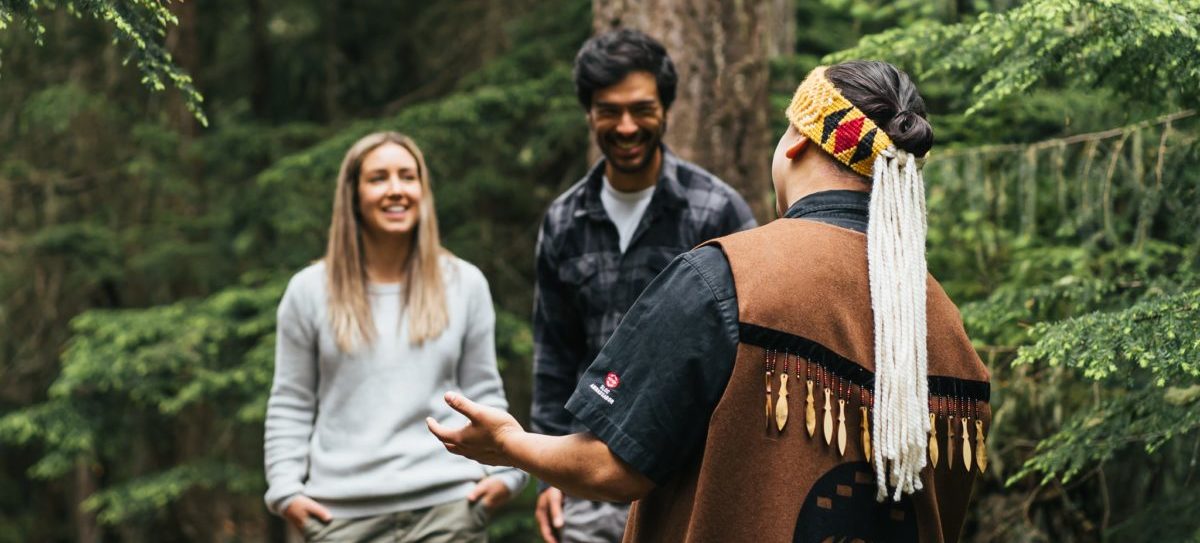
30 Dec Indigenous Tourism – The Fastest Growing Tourism Sector In The World
Indigenous Tourism is the fastest growing tourism sector in the world; it continues to increase engagement with travelers seeking more authentic experiences in destinations the world over. Moving beyond the experiential movement (where travelers are hastily positioning their tablets, smart phones, and cameras to capture a scene, exhibit, meal, or person for a brief moment), travelers are now seeking transformational experiences. They are building perspective by discovering things not only in front of them, but within themselves.
Indigenous Tourism at the Squamish Lil’wat Cultural Centre is about disconnecting from your phone and connecting with our knowledgeable Cultural Ambassadors proud to share their cultures with you. During the hourly guided tour, guests at the SLCC explore various art forms: wood carvings, drums, inner cedar bark weaving, wool weaving, drums and masks. Art is our rich cultures in a tangible form, to be shared. It is our teachings; it transcends races and creeds and is a reflection of our beautiful territories. Our team pull back the curtain on what similarities and differences we all have to one another, often leaving you with a deeper connection to the land we walk on and the individuals we each identify as. Considering the colonial past that jeopardized the first peoples of Canada, the SLCC is a profound space for visitors to learn the thriving nature of our communities.
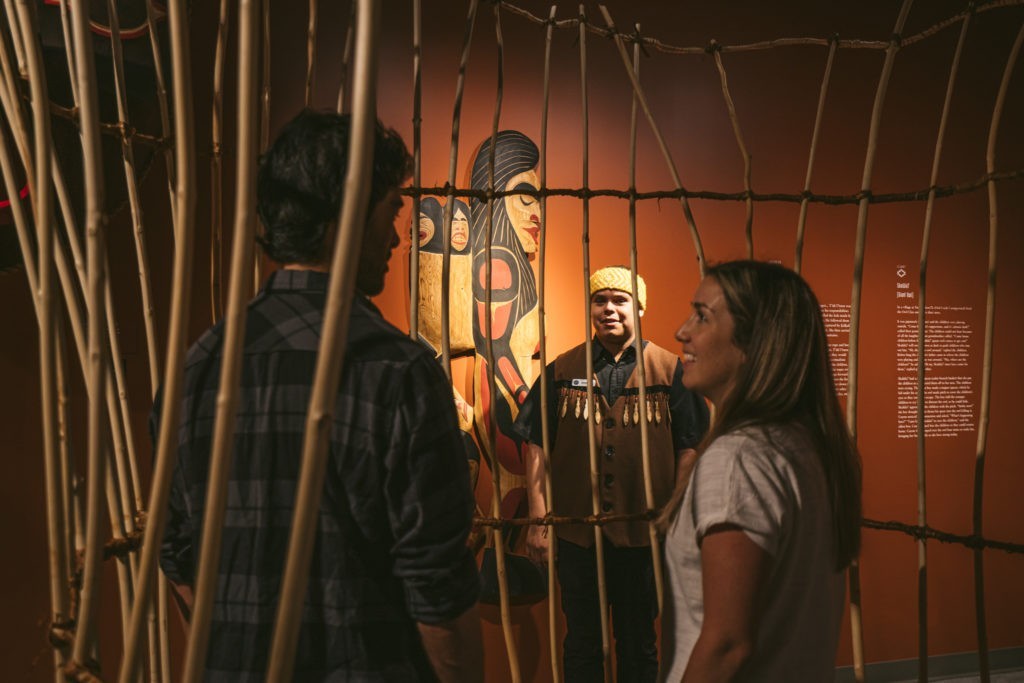
Here’s what our team have to say about Indigenous Tourism and the role the SLCC plays in leveraging our stories for the world to learn more:
Mixhaltsa7 Alison Pascal, Curator:
When the Squamish Lil’wat Cultural Centre opened up our doors in 2008 we increased Indigenous Tourism in the Sea to Sky Corridor. Through the Cultural Centre the two nations are able to share their worldviews through songs and stories and invite guests to join in. Most important, the SLCC has provided the opportunity for the world to meet the Squamish and Lil’wat people. The SLCC is continuing to grow their business and diversify their programming reaching guests across the world.
With great foresight the “Aboriginal Youth Ambassador Program” was created (now named the “Indigenous Youth Ambassador Program”). The programs trains youth to work with non-Indigenous people and share their culture. This program has built a foundation to build on Indigenous Tourism in the Sea to Sky Corridor.
The SLCC is pivotal to the growth and success of Indigenous Tourism in the Sea to Sky Corridor.
Cheximiya Allison Burns Joseph, Youth Ambassadors:
I believe that the Tourism Sector supports Indigenous Youth by giving them another option for employment opportunities. Specifically with Indigenous Tourism, I believe this is a great way to support themselves and stay or reconnect with their roots. For myself it was a dream to be able to work and learn more about my culture and I know many of the youth who participate in the Program feel the same; “it’s not work” many of them say.
With so many aspects of Indigenous Tourism and different avenues for people to explore the possibilities are endless and available to all types of people – not just the outgoing ones.
Theodora Sam, Kitchen Manager:
We learn and share with one another. Training the IYAs to carry on our culture and heritage here at the SLCC creates unique work opportunities for them; not only do they share their culture and heritage with visitors from around the world, they also share songs, art and cuisine amongst one another from our two nations.
Roxanne, Gift Shop Manager:
When speaking with guests to our Centre, shoppers remark that our Gift Shop provides a positive and welcoming guest experience. We are clean, tidy, and have something for everyone.

Cultural Tourists ask themselves: how do we connect with the indigenous experience?
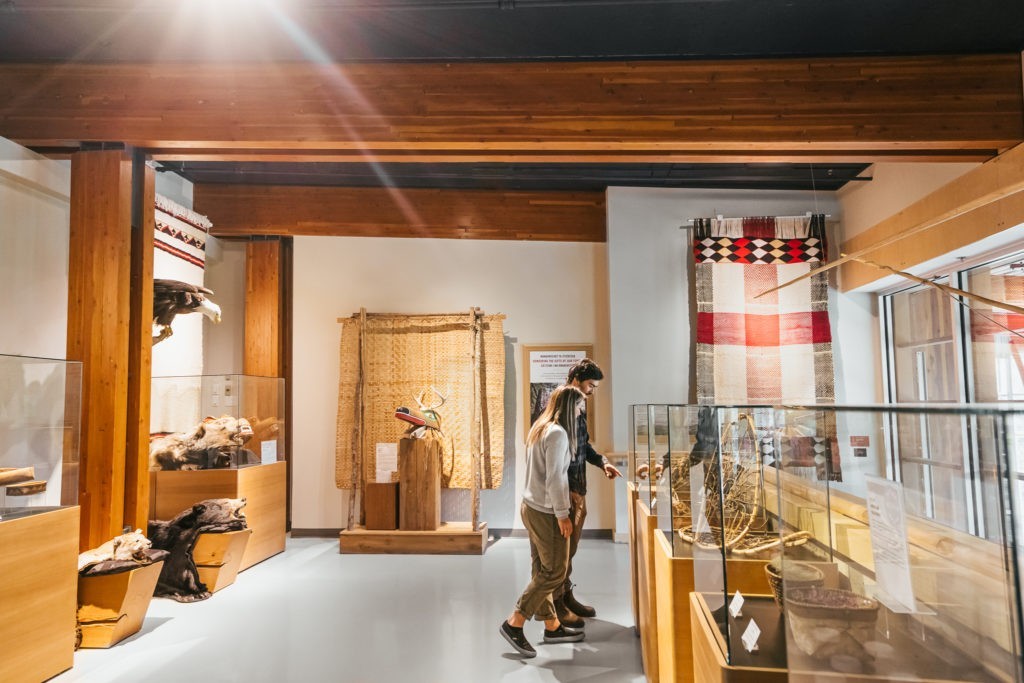
A quick answer is understanding that Indigenous Tourism businesses are not selling the past, we are sharing the future. Deeply rooted in Indigenous practices is that we are borrowing from the land, and it is our responsibility to care for Mother Earth and protect her for seven generations forward. We all share a path, we all walk together; in a currently fractured and troubled world, we need these connective experiences now more than ever.
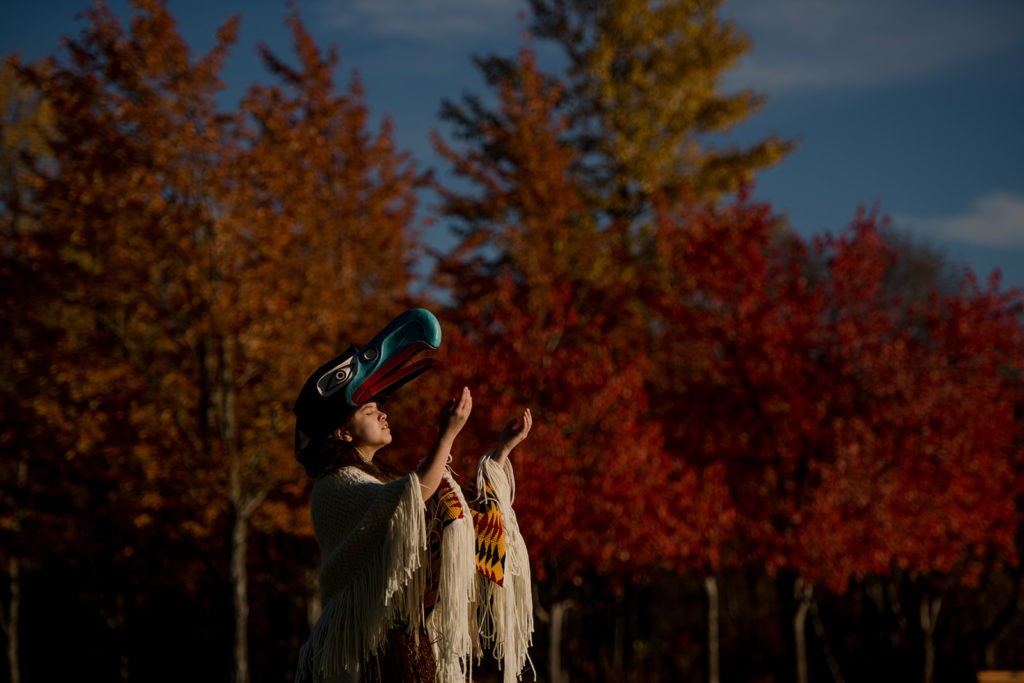
Logan Swayze Photography 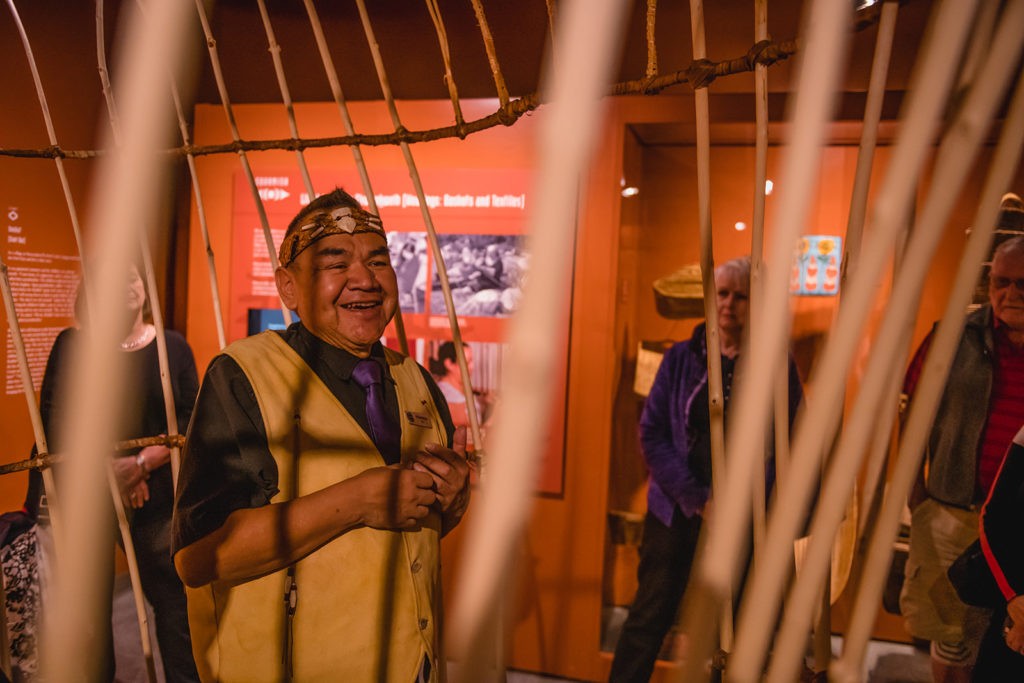
Logan Swayze Photography
Indigenous Tourism is about educating guests about our rich cultures: historic, present, and future. We are educating guests on why the SLCC is a space of significance: we highlight our history, story, and connection to the land. We have cultivated employment options for nation members and present our hospitality in a welcoming space. Guests engaging in Indigenous Tourism develop funding for our communities, our infrastructure, and provide full time employment opportunities that grow capacity of our youth.
As stated by the United Nations World Tourism Organization’s Website, Tourism offers a powerful incentive for preserving and enhancing intangible cultural heritage, since the revenue it generates can be channelled back into initiatives to aid its long-term survival. Source: https://ethics.unwto.org/tourism-and-culture
Whether to our shared territory our through our doors, we look forward to welcoming you to our land, and to hear our stories gifted from our ancestors, which we in turn are fortunate to carry and pass onto our youth, for future generations, to strengthen them.
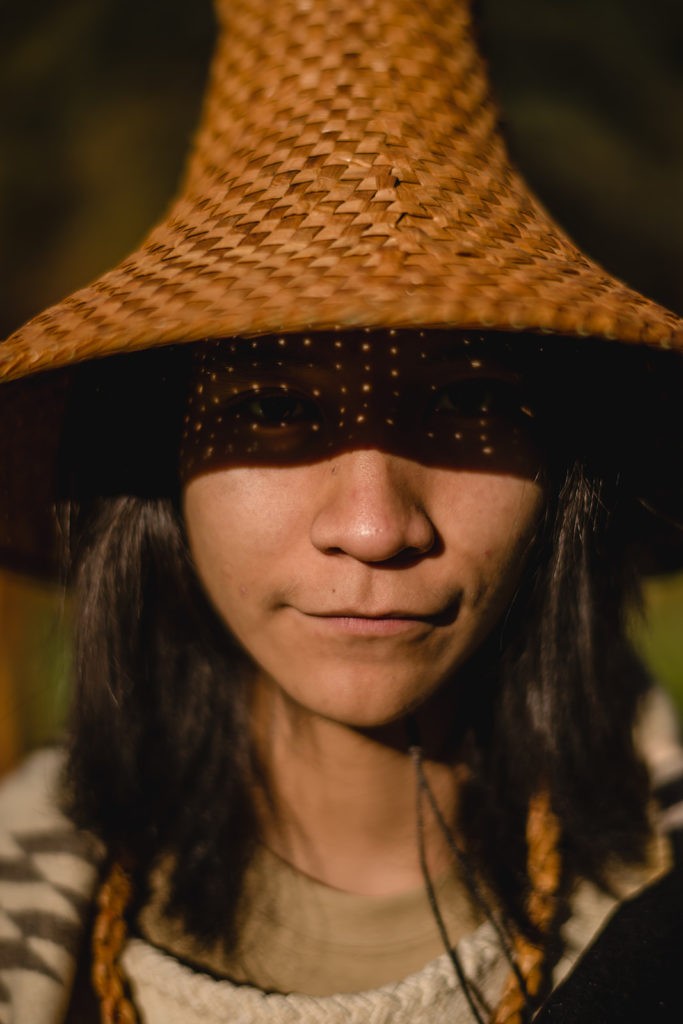


No Comments